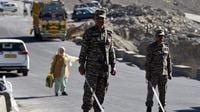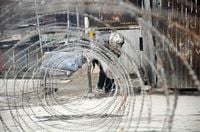For five tense days, the mountainous Union Territory of Ladakh has remained under curfew, with its capital Leh at the epicenter of violent unrest. The spark: deep-seated demands for statehood and the extension of the Sixth Schedule—constitutional provisions that grant autonomy and protect tribal interests—to the region. The violence, which erupted on September 24, 2025, has left four dead, dozens injured, and over 50 arrested, casting a harsh spotlight on Ladakh’s fraught relationship with the central government and the complexities of its governance since its separation from Jammu and Kashmir in 2019.
According to Devdiscourse, the unrest began last Wednesday, when protests organized by the Leh Apex Body escalated into deadly clashes. The authorities responded with a sweeping curfew, shutting down mobile internet and imposing prohibitory orders across major parts of Ladakh, including Kargil. While the initial restrictions were strict, a four-hour relaxation on Saturday passed peacefully, offering a brief respite to weary residents. Still, the region remains on edge, with Lt Governor Kavinder Gupta convening high-level security meetings to reassess the situation and map out a path forward.
The roots of the current crisis run deep. As reported by The Hindu, Ladakh’s transition to Union Territory status in October 2019 was initially met with celebration in Leh, but Kargil’s Shia-majority population marked it as a “black day,” fearing marginalization and loss of political voice. By 2020, the early enthusiasm had faded across the region, replaced by growing anxiety over political representation, job security, and the protection of local land from external exploitation—concerns heightened by the repeal of Article 35A. The resulting sense of vulnerability united Ladakhis across religious and regional lines.
One of the central grievances has been the perceived sidelining of the Autonomous Hill Development Councils (LAHDC-Leh and LAHDC-Kargil), long the pillars of local governance. Under the new UT framework, their legislative and financial powers became unclear, fueling a sense of political disempowerment and the suspicion that outsiders were gaining dominance. As the disconnect with the central government grew, many Ladakhis began to doubt whether Union Territory status had truly delivered on its promises.
Political groups from both Leh and Kargil responded by forming the Kargil Democratic Alliance (KDA) and the Apex Body, each pushing for self-governance but with differing visions—Kargil’s Shia population sought statehood, while Leh’s Buddhists demanded constitutional guarantees. By 2020, these groups joined forces to form a high-powered committee (HPC) to engage with the Ministry of Home Affairs (MHA), with a key demand being the filling of over 5,000 job vacancies linked to Resident Certificates. However, as The Hindu notes, administrative inaction left many young people unemployed and increasingly frustrated.
The talks with the MHA have been sporadic and, by most accounts, unproductive. Even local BJP leaders such as Thupstan Chhewang and Tsering Dorjee resigned in protest over governance issues—an indication that dissatisfaction transcends party lines. The KDA and Apex Body have continued to press for Ladakh’s inclusion under the Sixth Schedule, which would offer a measure of autonomy and protection for tribal areas. While the push has its critics—some residents worry it could be a regressive step for Ladakh’s diverse culture—the demand has gained significant local support.
The region’s governance vacuum has only deepened the crisis. With no legislature and limited powers for local bodies, Ladakh’s current framework has failed to meet public expectations. Border tensions with China have added urgency and complexity, with the central government wary of foreign interference in Ladakh’s domestic unrest. Ahead of the 2020 LAHDC elections, the Apex Body even threatened a boycott, which was only lifted after Home Minister Amit Shah promised protections akin to the Sixth Schedule. The elections saw the BJP win 15 seats and Congress nine, a notable shift from earlier results.
Yet, progress has remained elusive. A committee led by G Kishan Reddy was set up in January 2020 to address Ladakh’s concerns, but it quickly lost momentum amid the Covid-19 pandemic and increased Chinese incursions. The government’s engagement with Ladakhis has since been limited, often restricted to a handful of agitators, deepening mistrust and undermining cooperation.
The recent violence has brought these long-simmering tensions to a boil. On September 24, as reported by Greater Kashmir, protesters set fire to a local BJP office and allegedly pelted stones at police and CRPF personnel. Security forces responded with gunfire, resulting in four deaths and 90 injuries. Director General of Police S D Singh Jamwal defended the actions of his officers, stating, “If the CRPF had not been there that day, I am telling you with full confidence that the entire town would have been burned down. We do not want a force here. We want peace. But peace will only come when people understand their responsibilities.”
Jamwal also blamed “vested interests” and climate activist Sonam Wangchuk for inciting the violence, citing intelligence that suggested attempts to disturb the peace. Wangchuk, a prominent figure in the protests, was arrested under the National Security Act and sent to a jail in Jodhpur, Rajasthan. According to police, Wangchuk’s speeches referenced international protest movements and allegedly encouraged unrest. There are also ongoing investigations into possible foreign funding and connections, after a Pakistani intelligence operative was arrested for sending videos of Ladakhi protests across the border.
The authorities have since arrested over 50 people, including suspected ringleaders. Three Nepalese citizens with bullet injuries were admitted to hospital, and security forces reported that 70 to 80 police and CRPF personnel were injured in the clashes. The DGP recounted, “When they attacked a political party’s office and set it on fire, four women constables of the Ladakh Police were inside. We rescued them with great difficulty.”
In the aftermath, the administration has tried to restore order and reassure the public. On September 27, curfew restrictions were eased for a few hours, allowing residents to purchase essentials. Lt Governor Kavinder Gupta chaired a high-level security meeting, emphasizing the need for strict law and order and seamless coordination among civil and security agencies. He commended the people of Leh for their restraint during the relaxation and reaffirmed the government’s commitment to the security and welfare of Ladakh’s people.
Despite a dramatic increase in central financial allocations—from Rs 57 crore to Rs 6,000 crore—development has been slow, and Ladakh remains heavily dependent on subsidies. The appointment of largely inexperienced administrators, rather than local experts, has only fueled frustration. Activist Sonam Wangchuk has warned that his continued detention could inflame tensions further, but public trust in the legal process remains, for now, intact.
With fresh talks between Ladakhi leaders and the MHA scheduled for September 27, the government faces a critical test. As the region stands at a crossroads, balancing protectionism and integration, the imperative is clear: Ladakh’s unique identity, employment prospects, and regional integrity must be preserved through robust legal frameworks and genuine engagement—not just promises and piecemeal concessions.
For Ladakh’s people, the hope is for a peaceful, inclusive, and sustainable resolution—one that finally addresses the aspirations and anxieties that have simmered since 2019 and erupted so tragically this September.





